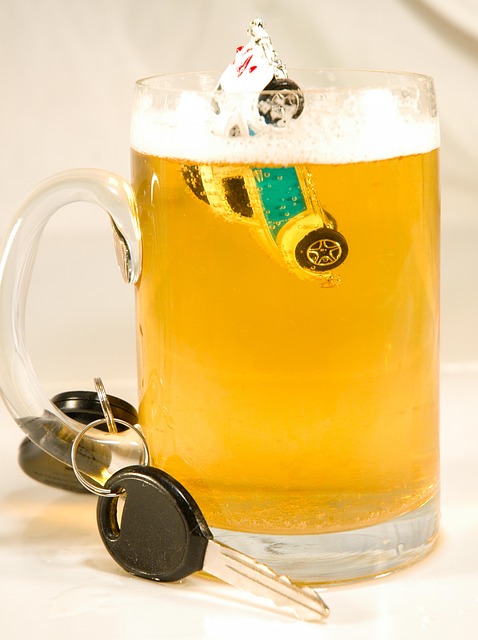Breath Alcohol Testing (BAL) is a key tool in DUI cases but suffers from potential inaccuracies due to equipment issues, physiological variations, and environmental factors. Many jurisdictions face challenges due to varying BAC limits and subjective interpretations of impaired driving, leading to loopholes and unfair outcomes. Inaccurate BAL tests can result in wrongful convictions or reduced sentences. Technological advancements have improved accuracy, but maintaining reliability requires rigorous calibration, maintenance, and adherence to standardized procedures. By addressing these loopholes through evidence-based reforms, balanced testing, and enhanced training, we can ensure fair DUI enforcement and deter impaired driving.
In the pursuit of justice, accurate Breath Alcohol (BAL) test results are paramount. Despite advancements in technology, loopholes in DUI legislation continue to cast doubt on these crucial tests. This article delves into the fundamentals of BAL testing, critically examines existing legal gaps, explores the profound impact of inaccurate results on DUI cases, and highlights modern technologies aimed at enhancing accuracy. We also discuss best practices and future reforms needed for more just DUI enforcement, addressing the persistent challenges posed by loopholes in legislation.
- Understanding BAL Testing: Uncovering the Basics
- Loopholes in DUI Legislation: A Critical Analysis
- The Impact of Inaccurate BAL Results on DUI Cases
- Enhancing Accuracy: Modern Technologies in BAL Testing
- Best Practices for Ensuring Reliable BAL Test Outcomes
- Future Directions: Reforms for More Just DUI Enforcement
Understanding BAL Testing: Uncovering the Basics

BAL testing, or Breath Alcohol Testing, is a critical component in determining blood alcohol concentration (BAC) levels during legal proceedings, particularly in cases involving suspected DUI (Driving Under the Influence). This process measures the amount of alcohol present in an individual’s breath, offering a non-invasive way to estimate BAC. However, it’s essential to recognize that BAL testing isn’t infallible and has its share of complexities. The technology involved can be susceptible to various factors that might introduce loopholes in DUI legislation if not meticulously managed.
Accurate results are paramount to ensure fair legal judgments. Any deviations from the expected outcomes could point to potential issues with equipment calibration, individual physiological variations, or even environmental influences. Given these variables, it’s crucial for law enforcement agencies and courts to maintain strict protocols to validate BAL test accuracy. By doing so, they can address any loopholes in DUI legislation and ensure that breath tests provide reliable evidence in criminal cases.
Loopholes in DUI Legislation: A Critical Analysis

In many jurisdictions, the laws surrounding Driving Under the Influence (DUI) have loopholes that undermine their effectiveness. These gaps in legislation often result in reduced penalties for offenders, allowing them to evade significant consequences. For instance, varying blood alcohol concentration (BAC) limits across states create a patchwork of regulations, confounding consistency and justice. Some states set BAC thresholds as low as 0.02%, while others have more lenient standards at 0.08%. This disparity can lead to inconsistent enforcement, where individuals with slightly lower BAC levels in one state might face different legal repercussions in another.
Furthermore, the interpretation of “impaired driving” varies, often relying on subjective assessments by law enforcement officers. Subjectivity in this area opens the door to potential bias and arbitrary decisions, affecting the fairness of DUI cases. Loopholes also extend to technicalities in evidence handling, where challenges to admissibility can delay or dismiss charges, even when guilt is apparent. Addressing these loopholes is crucial for enhancing the accuracy and integrity of DUI testing, ensuring that results from BAL (Breath Alcohol Level) tests are treated uniformly and justly across legal jurisdictions.
The Impact of Inaccurate BAL Results on DUI Cases

Inaccurate Balance Alcohol (BAL) test results can have profound implications for individuals facing Driving Under the Influence (DUI) charges. When a breathalyzer machine produces faulty readings, it introduces loopholes in DUI legislation designed to ensure public safety. Prosecutors rely on these tests as key evidence, so even minor errors could lead to wrongful convictions or reduced sentences. If a defendant’s BAL level is reported lower than actual, it might be used as a defense strategy, but the burden of proof still lies with challenging the test’s accuracy and reliability.
These inaccuracies can arise from various factors, including machine malfunction, improper usage, or environmental influences. Given the strict penalties associated with DUI offenses, ensuring the integrity of BAL testing is paramount. Regular calibration, trained operators, and continuous quality control measures are essential to maintain the reliability of these tests, thereby upholding the spirit and letter of the law while protecting the rights of those accused.
Enhancing Accuracy: Modern Technologies in BAL Testing

In recent years, advancements in technology have significantly enhanced the accuracy of BAL (Breath Alcohol Level) testing, a crucial component in DUI (Driving Under the Influence) cases. Modern devices employ sophisticated sensors and advanced algorithms to minimize errors and provide more reliable data. These technologies aim to bridge the loopholes in DUI legislation by offering precise measurements, ensuring that law enforcement agencies have concrete evidence for accurate convictions or acquittals.
The integration of cutting-edge features like real-time data analysis, automated calibration routines, and multi-sensor fusion techniques has elevated the overall precision of BAL testing. These innovations not only counteract potential biases in traditional methods but also enable faster and more efficient processing of samples, thereby streamlining legal procedures and enhancing judicial fairness.
Best Practices for Ensuring Reliable BAL Test Outcomes

To ensure accurate and reliable Bal (Breath Alcohol Tester) test outcomes, several best practices must be followed. First, proper calibration and maintenance of the device are paramount. Regular checks and updates according to the manufacturer’s guidelines eliminate potential loopholes in DUI legislation by ensuring the equipment provides consistent and dependable readings. Second, adherence to standardized procedures is crucial. This includes using certified reference materials and following protocols that minimize human error, which can significantly impact test accuracy. Training and supervision of operators are essential to prevent any deviations from these critical procedures.
Additionally, continuous monitoring of environmental factors like temperature and humidity is necessary. These conditions can affect the performance of BAL devices, leading to inaccurate results if not controlled. Regular audits and quality control measures help identify and close any gaps in testing protocols, ensuring that every test meets legal standards and provides valid evidence for judicial proceedings.
Future Directions: Reforms for More Just DUI Enforcement

As we look ahead, it’s crucial to address the loopholes in DUI legislation that currently plague our justice system. Balanced and accurate BAL testing is a pivotal step towards ensuring more just and consistent DUI enforcement. By implementing reforms based on robust scientific data, we can create a standardized approach that minimizes human error and subjective interpretation. This includes exploring alternative testing methods, enhancing training programs for law enforcement officers, and promoting public awareness campaigns to dispel myths surrounding alcohol consumption.
These future directions aim to bridge the gaps in current DUI laws, ensuring that every driver faces fair and equal consequences based on objective measurements. By doing so, we can foster a safer driving environment, reduce disparities in enforcement, and ultimately save lives by deterring impaired driving.
In conclusion, while understanding and improving BAL testing accuracy is paramount, addressing loopholes in DUI legislation remains a critical frontier. By leveraging modern technologies and best practices, we can enhance the reliability of BAL test outcomes, ensuring more just and consistent DUI enforcement. Remember that, ultimately, accurate results matter for fairness and public safety.






